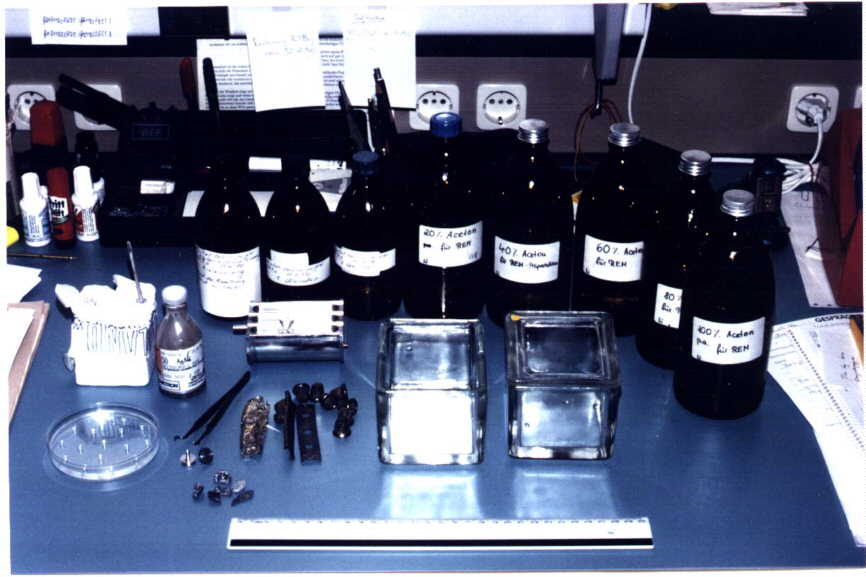| Following fixing, washing and replacement of specimen water
with acetone, the samples are placed in wire specimen holder baskets, which
are then placed in the liquid transfer boat. The boat is filled with acetone
and inserted into the pressure vessel of the critical point dryer, where
the acetone is replaced with liquid carbon dioxide. The temperature is
then increased until the critical point is reached, in which state the
carbon dioxide is also removed from the sample, leaving it completely dry. |

